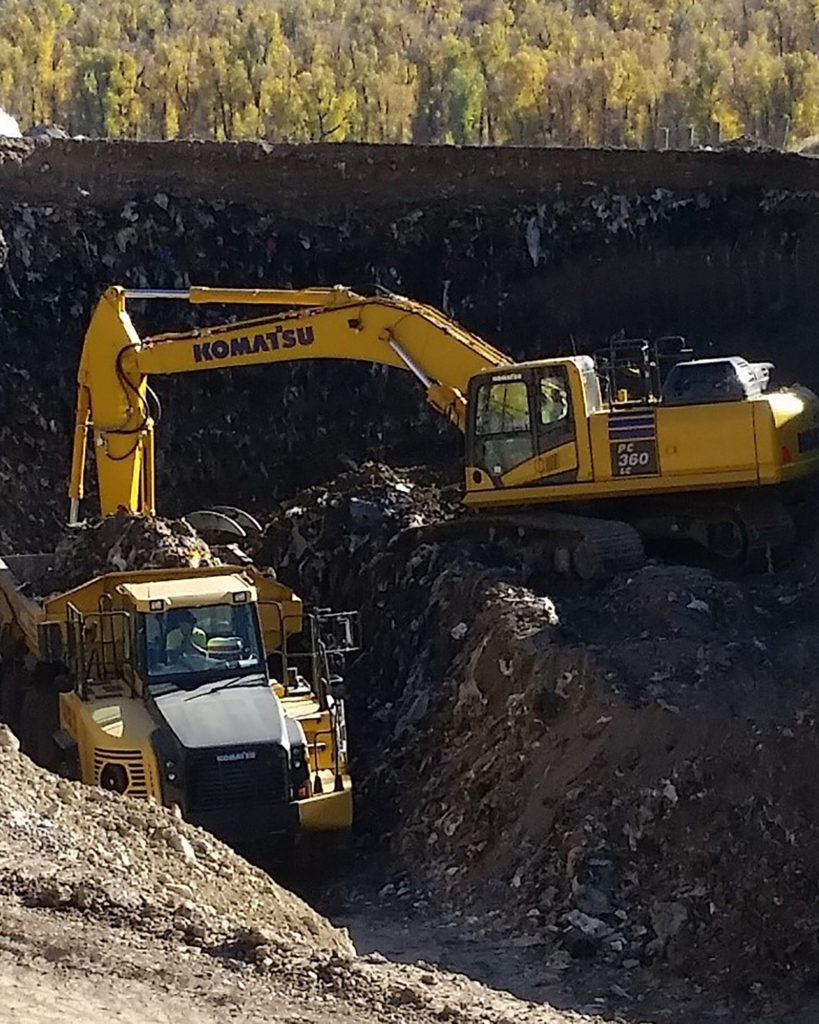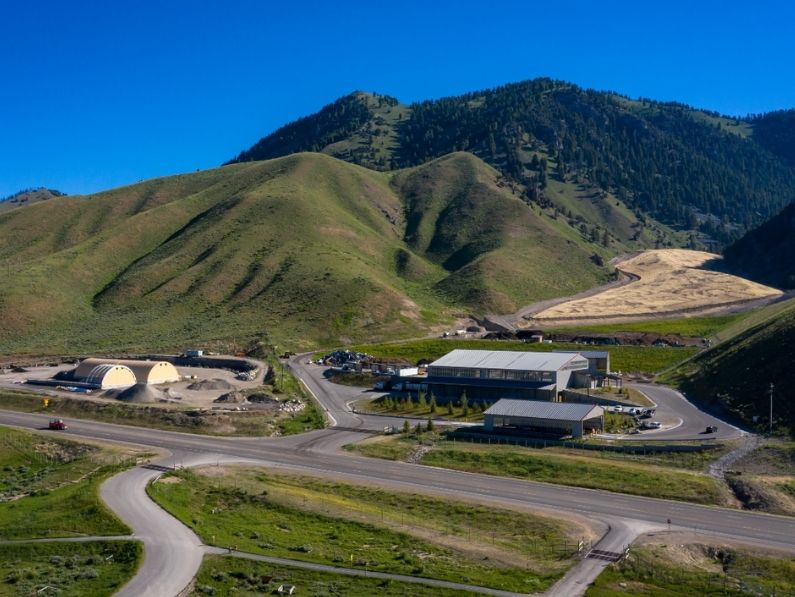At one of Teton County’s Recycling Transfer Stations on Snow King Avenue, people are shuffling in and out of their cars to dump their aluminum cans, plastic bottles, and cardboard into designated dumpsters. A local dog park is highly audible just on the other side of the parking lot, and the smell of pine needles from locals disposing of their Christmas trees lingers in the air.
Teton County’s Integrated Solid Waste & Recycling Program, or ISWR, finished compiling their statistics from 2020 into an Annual Report. And just like everything else last year, it was a challenging year for the ISWR, according to Waste Diversion and Outreach Coordinator Carrie Bell.
“The way we were impacted most significantly were operationally,” Bell said. “You know, figuring out how to continue to manage the county’s waste while keeping everybody safe. Specifically here at the recycling center, since we sort everything by hand, our employees are touching a lot of things. And a lot of these things are not clean as we would hope that they would be. So that was a significant issue.”
Bell says some recycling programs were temporarily suspended, but luckily, there were no major COVID outbreaks among staff. The disruption that was 2020, though, did lead to some changes in local recycling rates—and in the types of trash the ISWR received.
“The perception around a lot of our common practices was shaken to their core, like reusable bags,” Bell said. “When the pandemic initially started, there was a lot of fear and unknowns around reusable bags and their safety and efficacy. And so, you know, speaking specifically to that, we saw a significant increase in paper bag usage, which makes sense.”
They also saw, of course, an increase in PPE equipment in the waste stream, which is not recyclable. Plus, there were increases in aluminum, and decreases in glass. About 20 to 25 percent of what we send to landfills is construction waste from demolitions and rebuilding—a result of the boom in local real estate. Construction waste increased by 1000 tons this year after an already record-breaking 2019, according to the ISWR’s Annual Report.
“Construction and demolition waste is a significant issue in our waste stream, and—with the fact that so much of that material is divertable and/or reusable—I think it’s really important for it to be a priority for our community moving forward,” Bell said.
A crucial statistic that town recycling programs across the county pay attention to is its diversion rate. Diversion rates measure how much waste isn’t getting sold to landfills or being burned. It’s a critical measure of sustainability, local education programs, and coordination. Teton County’s waste diversion rate average over the past five years is just about 32 percent, but that number was dragged down slightly last year. Bell points to shifting consumer habits in 2020 as a reasoning for that, and says it might take some time before everything is back to normal and diversion rates start to improve.
“The way that we’re going to see change is through our upcoming projects like food waste composting,” Bell said. “That will be the next time I would expect to see a significant change in our diversion rate.”

A massive ISWR project, called “Taming the Wild West,” finally completed this year after eight years of work. The project entailed excavating waste from an old landfill site and consolidating it with other trash in a new location. (Courtesy Photo)
A composting program for businesses is one thing Bell is excited to begin in 2021. Another big recent change at the ICWR was the Taming the Wild West Project, which completed this year and consolidated our landfill space through an excavation project, which will save money and time in the long run.
Bell also looks forward to continuing to sell our recycling in the future, which isn’t necessarily a given in other communities.
“Our products are viable materials in the marketplace. We can sell them,” she said. “We have great relationships with, you know, the actual recyclers. They want our material because it’s so clean and it can actually be recycled, where a lot of communities—they’ve got kind of just really dirty garbage, basically. And it’s really hard to recycle, if not impossible to recycle.”
Although our diversion rate actually appears lower than in other similar communities, that’s because we’re stringent on what we accept at our recycling centers, because it actually gets recycled. Of course, improvements can always be made, and we have a long way to go before reaching the ultimate goal of reducing what we send to landfills by 60 percent by 2030. But, Bell still feels good about the direction the ICWR is headed in.





